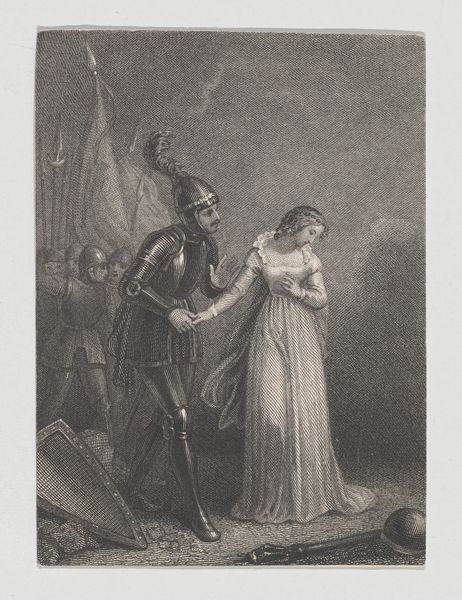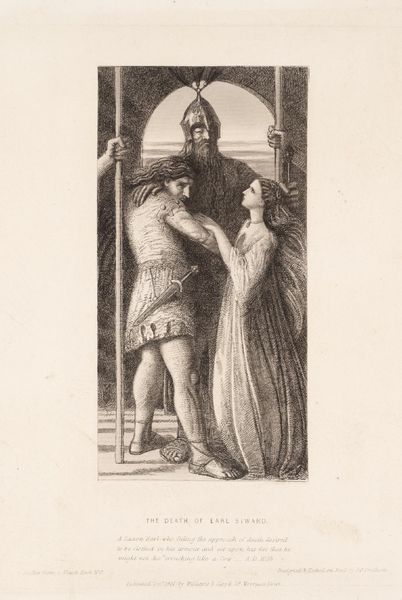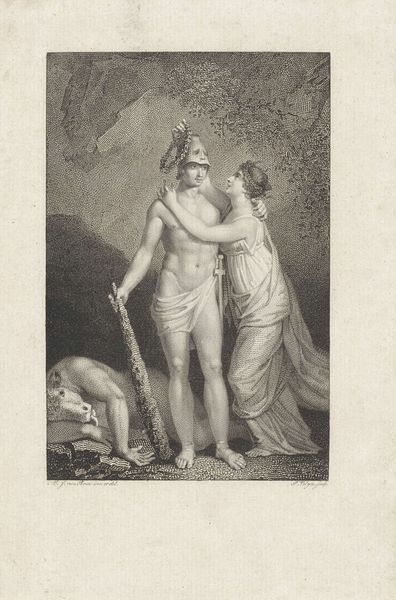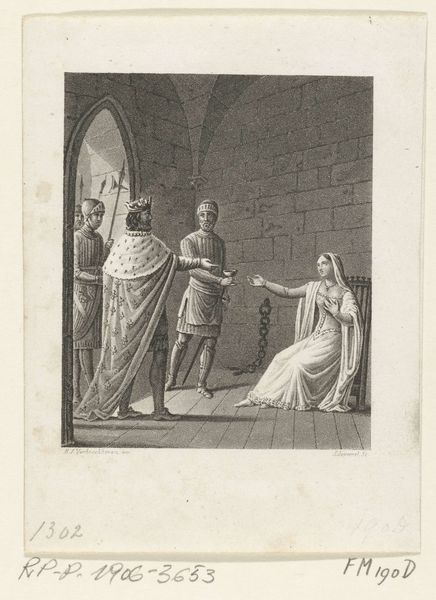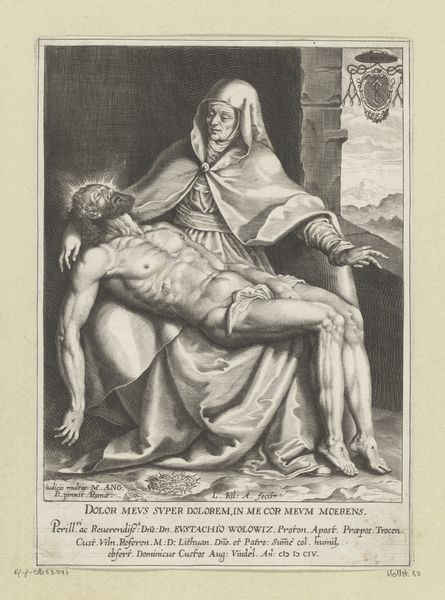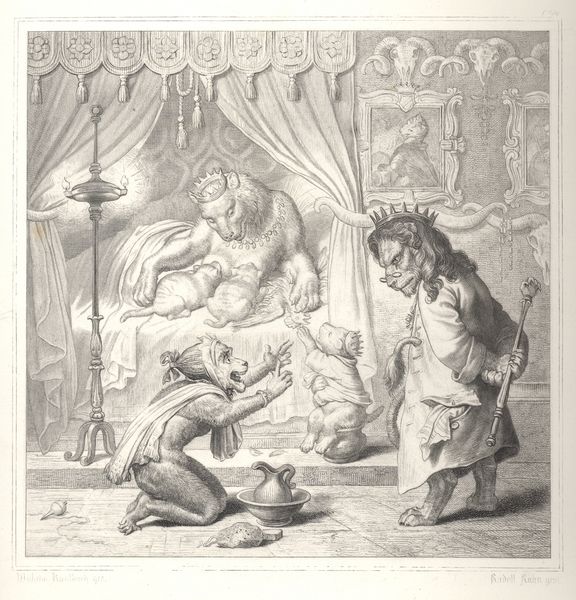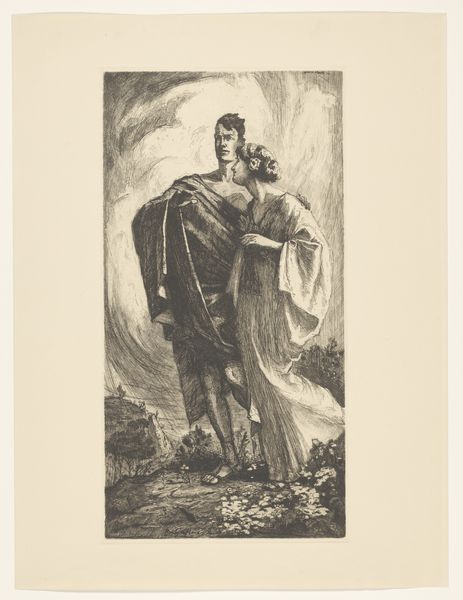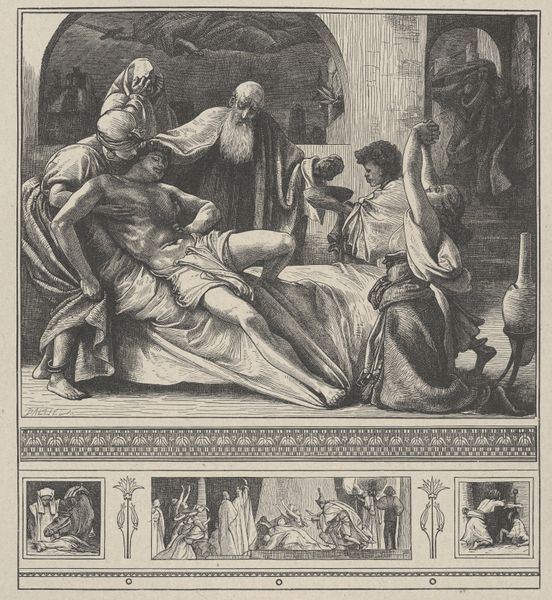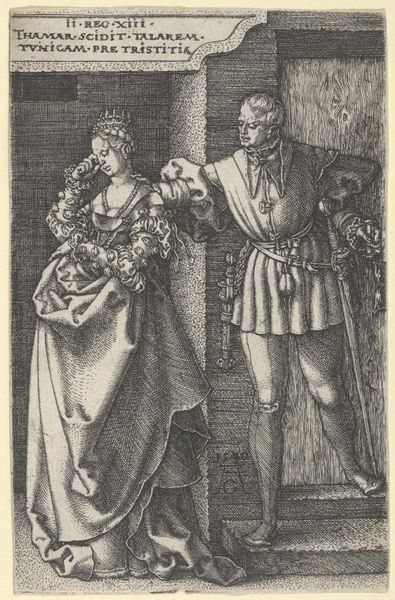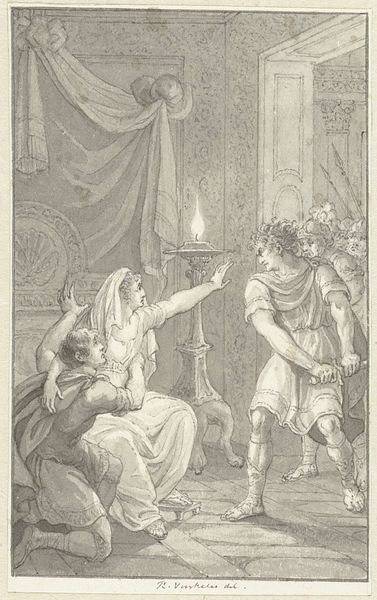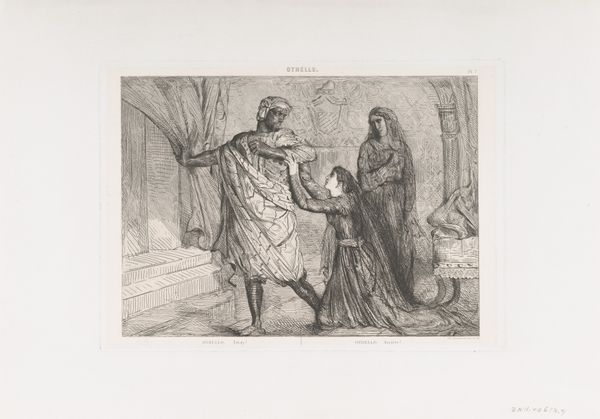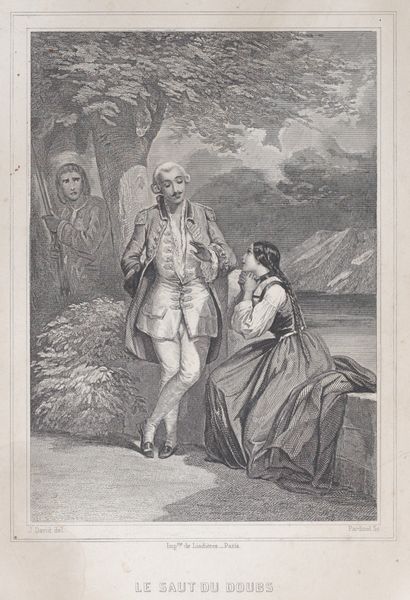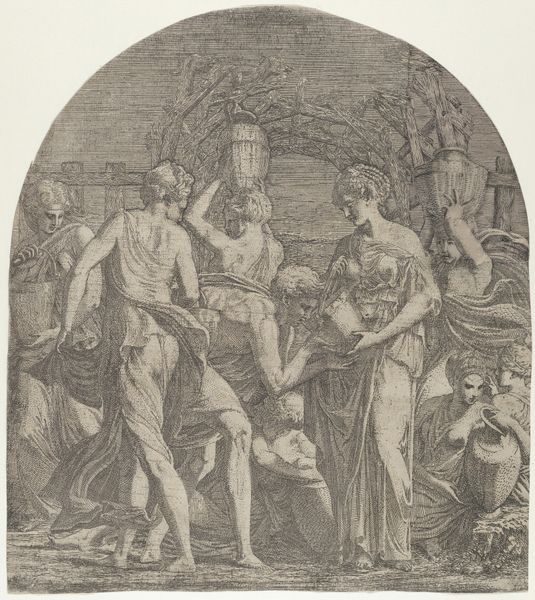
Dimensions: height 432 mm, width 337 mm
Copyright: Rijks Museum: Open Domain
Curator: Welcome to this exploration of "Siegfried en Kriemhilde," an engraving from 1860 by Carl Arnold Gonzenbach. Immediately, I'm struck by the work's rather muted tones and precise lines, creating a strong sense of formality. The composition itself appears meticulously constructed. Editor: The first thing that jumps out at me is the implied tension, or perhaps melancholy. There's a sense of foreboding hanging in the air between the two figures, who I presume are our titular characters, Siegfried and Kriemhilde. What can you tell us about their historical and social context? Curator: From a formal perspective, one notices the intricate detail in Siegfried's attire and weaponry—each line contributes to the overall texture, providing visual complexity, set against Kriemhilde's somewhat plainer costume that nonetheless has rich texture through draping. Note how the artist renders a smooth transition between the shading tones in the couple's garments to emphasize this contrast. Editor: Looking at them more closely through an intersectional lens, Siegfried seems to embody patriarchal power with his weapon, posture, and position next to Kriemhilde; a young woman who appears meek, vulnerable and clings to him for protection while he stands with a spear in hand. There is a certain vulnerability represented by Kriemhilde through her body language in opposition to a position of dominance represented through Siegfried. Curator: One could see that, but it's crucial to analyze the lines themselves, consider their weight and direction. Look, for instance, how Gonzenbach uses hatching and cross-hatching to establish form and create depth, primarily within the garments. Editor: Perhaps. However, without acknowledging the power dynamics embedded within the scene—the way gender roles are reinforced through visual cues such as composition, and clothing, which represents power – the technical aspects alone do not fully explain the work’s cultural impact. Isn’t this artwork part of a much larger nationalist mythology? Curator: Precisely! And, Gonzenbach’s ability to translate epic grandeur to a smaller scale speaks to the artist’s skill in controlling the viewer’s experience through manipulated details within the border to reinforce medievalism. Editor: Exactly. It serves as a powerful example of how artists used historical and cultural narratives to negotiate issues of identity, gender and social power in 19th-century Europe. It’s so much more than skillful lines and form. Curator: An astute reminder to see beyond, or within, the structural elements. Editor: And for the listener to recognize how important context is to fully unravel any artistic achievement.
Comments
No comments
Be the first to comment and join the conversation on the ultimate creative platform.

